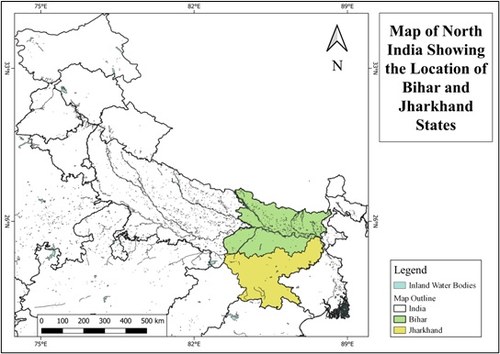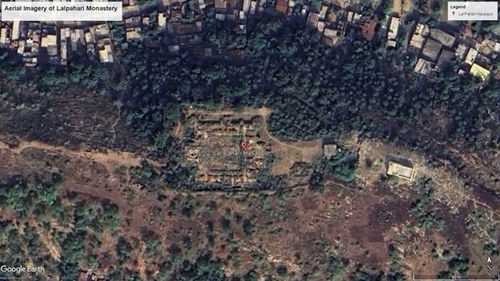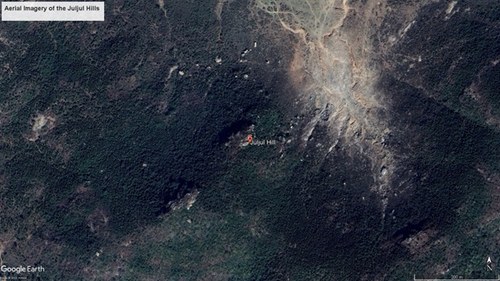- Home
- Project Apri sottomenù
- UPLAND ARCHAEOLOGY WORKSHOP Apri sottomenù
-
Abstracts
Apri sottomenù
- Wieke de Neef (Ghent University / Otto-Friedrich University Bamberg)
- Francesco Carrer (School of History, Classics and Archaeology, Newcastle University (UK))
- Umberto Tecchiati (University of Milan)
- Tesse Stek (KNIR - Royal Netherlands Institute in Rome)
- Riccardo Rao (University of Bergamo)
- Fabio Saggioro, Nicola Mancassola (University of Verona)
- Roberto Maggi, LASA (Laboratorio di Archeologia e Storia Ambientale), University of Genova
- Andrea Cardarelli, Andrea Conte (University of Rome "La Sapienza")
- Federico Zoni (University of Bergamo)
-
Short presentations
Apri sottomenù
- SHORT PRESENTATIONS PROGRAMME
- Putzolu et al., The 2nd Millennium BC in the northern Apennines
- Giorgi et al., New insights into the upland landscape of ancient Epirus, Southern Albania
- Carra, Subsistence economy in the Bronze Age in the northern Apennines upland
- Gaucci et al., Mapping mobility in the Apennines: The Reno Valley between the 6th-4th century BCE and the contemporary period
- Cirelli et al., Insediamenti di altura nell’Appennino Romagnolo e Toscano nel medioevo
- Betori et al., Amatrice: da castello a città
- Del Fattore, Upland landscapes and settlements strategies in the Central-Southern Apennines (1000 BC-2023 AD)
- Conversi et al., The site of Albareto cà Nova
- Bottazzi et al., Attorno al Monte Titano (739 m s.l.m.). Ricerche archeologiche e paleoambientali in Repubblica di San Marino
- Conversi et al., Il sito tardoatico – medievale d’altura della Piana di S. Martino , Pianello Val Tidone (PC)
- Cortesi et al., Archeologia dei paesaggi in una vallata appenninica: il progetto “Val Fantella” (Premilcuore, FC)
- Barbariol, Farms abandonment in Iceland
- Garattoni, Doss Penede (Nago, TN): progettare e costruire un insediamento minore nell’Alto Garda in epoca romana
- Santandrea, Detecting and Mapping Hilltop Sites between the Cesano, Misa, and Nevola River-Valleys
- Bonazzi et al., “Media Valle del Cedrino”: a region between uplands and plateaus
- Zanotti, Back to Monte della Croce
- Monticone et al., Un approccio di archeologia museale al ri-studio del sito neolitico di Chiomonte-La Maddalena (Piemonte, Italia). Revisione ed aggiornamento dei dati dal 1988 al 2023.
- Facciani et al., Exploring the funerary landscape of the Samarkand piedmont area
- Kaur and Poddar, Colonial Churches of Shimla: Public Archaeology as a Tool for Engagement and Outreach
- Datta, Upland Buddhist Monastic Complexes and the Pala Kingdom: Reviewing the Highland-Lowland Relationships in Ancient Bengal
- Staff
- Contacts
- Events calendar
- Seminars Apri sottomenù
- NEWS Apri sottomenù
Datta, Upland Buddhist Monastic Complexes and the Pala Kingdom: Reviewing the Highland-Lowland Relationships in Ancient Bengal
Affiliation: Master of Arts in Ancient Indian History, Culture and Archaeology, Deccan College Post-Graduate and Research Institute, Pune, India. Research Intern, Speaking Archaeologically

Figure I: Map of India showing the location of the states of Bihar and Jharkhand, as discussed in the essay
Introduction:
The states of Bihar (25°59’ N, 85°15’ E) and Jharkhand (23°43’ N, 85°15’ E) are located in the eastern part of India. The southern part of Bihar and the immediate northern part of Jharkhand feature a distinct rugged topography, characterised by the presence of several small hills and hillocks (Pandey, 1963). These upland regions are geologically considered to be offshoots of the Vindhyan ranges (further west), and are also socio-culturally quite significant (Singh, 2013). In the recent archaeological researches (cf. Angad, 2021; Kumar and Saha, 2020), the evidence of the presence of Buddhist monastic complexes in these upland regions have been revealed, besides the recovery of several important stone inscriptions and sculptures pertaining to the ritual domain (Kumar, 2011; Bautze-Picron, 2019). These date to the tenth through the twelfth centuries CE.
The present study reviews the emerging archaeological information to understand the locational significance of such Buddhist structures atop hills or in the foothill regions, and understand the networks of communication which probably existed between these upland institutions with the mainland areas. The case studies of two Buddhist monasteries have been chosen for the study here. One is the Lalpahari (or Lali Pahari) monastery (25°09´N, 86°06´E), whose remains have been found atop the Lalpahari hill in the Lakhisarai District of South Bihar. The other is the monastic remains discovered at the foothills of the Juljul hills (23°57'N, 85°25'E), in the Hazaribagh District of northern Jharkhand. Previous researches have pointed out the possible Pala dynastic affiliations of these two sites (Angad, 2021; Kumar, 2018).

Figure II: Aerial Imagery of the Lal Pahari Monastery in Lakhisarai, Bihar (Source: Google Earth)
Case Studies:
The site of the Lalpahari monastic complex is situated atop the Lalpahari hills (Lal Parvat) in the Lakhisarai District of southern Bihar. Archaeological excavations commenced here in 2017, following chance discovery in 2016 (Kumar, 2018). Based on inscriptions on two burnt clay seals in the Nagri script, found during excavations, the name of the monastery was discerned as “Srimaddharma Vihara” (Beg, 2021). Based on this evidence, the complex can be discerned to have been a Buddhist vihara or monastery. Typologically speaking, “viharas” were monastic complexes accommodating living cells for the inmates of the complex, and a central shrine area for meditation and worship (Elahi, 2018).
Structurally, the Lalpahari vihara site is considered to have undergone at least four phases of construction activity, the latest of which pertained to the 11th-12th centuries CE (Kumar et al., 2019). The basic architectural plan, as revealed through horizontal excavations, indicated the presence of a central courtyard surrounded by a pillared corridor, followed by rows of cells on all the sides. The outer walls of the complex consisted of bastions, of a diameter of 3.75 metres. These were strategically situated in the corners and the midpoints of the four sides (Kumar et al., 2019). An entranceway from the eastern rampart led to the central courtyard (Kumar, 2018). The cell-floors showed signs of extensive usage of pigments for plastering. Besides, a black-stone gargoyle, connected through a network of drains, was constructed as an outlet channel for waste-water from the entire complex (Kumar and Saha, 2020). The main sanctum area was created on a slightly elevated platform, measuring 7.5 by 7.5 metres, at the north-western part of the complex (Kumar et al., 2019).
Monasteries showing the presence of a fortified and walled settlement, replete with bastions and high walls, show parallels at the Nalanda mahavihara and Vikramashila mahavihara in present-day Bihar, and the Paharpur mahavihara in present-day Bangladesh (Elahi, 2018).
Based on the findings of a large number of stone sculptures as well as terracotta plaques pertaining to the Buddha as well as other deities of the Mahayana Buddhism, such as Avalokiteshvara and Jambhala, the religious affiliations of the vihara were determined as pertaining to Mahayana Buddhism (Kumar et al., 2019). Stylistically, the iconographic features of these sculptures were compared with finds from other places in eastern India, and attributed to the Pala School of Art (Picron, 2019).
Additionally, some of these terracotta plaques, stone images as well as clay sealings from the Lalpahari site were found containing inscriptions, in the Nagri and Siddhamatrika scripts (Kumar and Saha, 2020). These inscriptions expressed piety and devotion to the Buddha, and further indicated active religious activity at the site till at least the 12th century CE (Kumar and Saha, 2020). One of these inscriptions, found on a stone sculpture of bodhisattva Avalokiteshvara, recorded donations made by a certain Mallika Devi, probably a queen, to another lady of the monastery named Vijayshree Bhadra, considered to be the chief nun of the vihara (Beg, 2021). Thus, the monastic institution of Lalpahari was certainly receiving donations and patronage from individuals of the royal family, although the exact dynastic affiliations of such donors are not yet clearly known. Monasteries and monks as recipients of royal donations was a common feature of the contemporary eastern Indian subcontinent, with several examples existing about donors from the Pala ruling classes and their subordinates (Datta, 2019). The Srimaddharma vihara was no exception to that norm.

Figure III: Aerial Imagery of Buddhist monastic remains on the foothills of the Juljul Hills, Jharkhand (Source: Google Earth)
The second site of interest lies further south, at the foothills of the Juljul hills, in the Hazaribagh District of Jharkhand. Between 2020 and 2021, officials from the Patna Circle of the Archaeological Survey of India (henceforth, ASI) conducted explorations as well as excavations in three mounds in this area, revealing the structural remains of a Buddhist monastic complex with rooms, courtyard and a central shrine. The remains of a shrine with three chambers were also unearthed, 100 meters east of the monastic establishment. Although no reports have been published yet on the excavations conducted at the site, newspaper reports refer to the finds of several stone sculptures of the the Buddha and the Buddhist goddess Tara, which have been considered as indicating the Vajrayana Buddhist leanings of the site (Angad, 2021). Moreover, the presence of Nagri and Siddhamatrika inscriptions were also observed in sculptures recovered from the site, indicating devotion towards the Buddha, as was in the case of the Lalpahari monastery. These inscriptions were dated to the 10th to 12th centuries CE, based on palaeographic grounds (Angad, 2021). At present, the emerging evidence seems to suggest the presence of a Buddhist vihara at the site, although further discussion on its nature of organization would depend upon further excavations here.
Conclusion:
One of the key observations of the study pertains to the resource-use and extraction by the residents of the upland monasteries. In the case of Lalpahari, excavations revealed evidence of the presence of stone blocks in the site, quarried from the hills. Quarrying locally available lithic material would have proven beneficial for monasteries in Eastern India, like Nalanda, that were otherwise importing stone from far-off locations for their use in sculpture-making. Similarly, accessways to the nearby rivers and waterbodies, such as the Kiul River, were crucial for inmates of the monastery. The hillock, rising over the neighbouring landscape, would have offered a good vantage point for viewing and perceiving the locality.
These upland monasteries were also situated in-between major towns, capitals,and trading centers. For instance, Lalpahari lay on the way from Pataliputra to Tamralipri coast (Kumar, 2018). On the other hand, the monastery of Juljul hills lay in between Sarnath and Bodhgaya, popular Buddhist religious sites (Angad, 2021). Given the presence of several other Buddhist and Brahmanical structures and sculptures in the vicinity of the two sites, they cannot be considered as isolated or even newly-emerged religious monuments. The evidence of royal patronage as seen from inscriptions in Lalpahari, along with the rich ceramic evidence found during excavations, indicate that these upland institutions were not existing in complete isolation from the mainland areas. Nor were these areas with no political presence, as is evidenced by the high number of Pala donative inscriptions recovered from the region (Kumar, 2011).
Thus, it can be concluded that upland monasteries in Pala -Period Bengal (ninth to twelfth centuries CE) existed within an already existing network of Buddhist as well as Brahmanical religious structures. Besides ritual significance, the landscape offered a variety of useful resources that the inmates of these monasteries were consciously using. Although post-10th century CE is generally considered as the phase of waning power of the Pala rulers, donative inscriptions and the scale of constructions involved continued royal patronage in these localities.